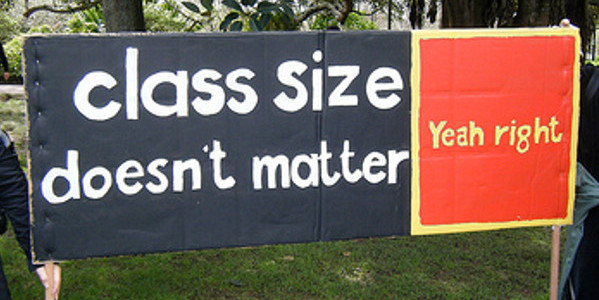
Class size, average class size, and pupil-teacher ratio; truth, lies and government statistics
The OECD reports the ratio of teachers to students in New Zealand secondary schools as 1:14. Rob provides some explanations of the measures of class size - the number of students in a class.
The NZ Herald reported on the OECD study Education at a Glance which gave the ratio of teachers to students in New Zealand secondary schools as 1:14. Some teachers wondered where those extra 12 to 16 students in their classes came from? Rob enlightens us ...
Actual class size
The Actual class size is a concrete measurement.
It is the count of how many students there are in front of the teacher, the actual experience of the students and the teacher.
In 2011 PPTA found that two thirds of secondary school classes were between 17 and 30 students. The most common class size was 28. The median class size was 25. The largest class identified was 51 students; the smallest had a single student.
Junior classes tend to be larger than senior classes and classes in small schools tend to be smaller than classes in large schools. Class size can also vary by subject and where other factors operate.
Average class size
The average class size is mathematical construct.
This can either be:
- the number of students divided by the number of classroom teachers or
- an average of the actual class sizes in a school or system (see below).
It is very unlikely likely that any class in the country (or the school) is actually the average class size. For example, the mean class size across all New Zealand secondary schools in 2011 was 23.3 students.
Average class size will mask a range of class sizes
A class of 40 and a class of 20 have the same average class size as a class of 31 and a class of 29.
Two schools can have similar average class size but quite a different range of class sizes.
Average class size increases in NZ schools as the role increases. Average class size decreases with year level.
Pupil:Teacher ratio
The Pupil:Teacher (PTR) ratio is a resourcing measure.
It is calculated by dividing the number of students by how many full time teacher equivalents (FTTE) the Government funds. As the staffing is not allocated linearly the PTR is smaller for small schools than it is for large schools. It ranges on a school by school basis from 4.2 to 17.9 students per FTTE. The national average in New Zealand is about 14 students per FTTE.
- It includes people who are not teaching (principals, senior leaders, careers and guidance).
- It includes the non-teaching component of those who are teaching (middle leadership time allowances, non-contact time etc.).
- It does not include teachers paid for by the school not the state.
It is not a measure of class size at all and gives a very poor correlation with actual class size.
In some overseas jurisdictions the ratio includes adults in roles which are not related to teaching (caretakers, ancillary staff etc).
